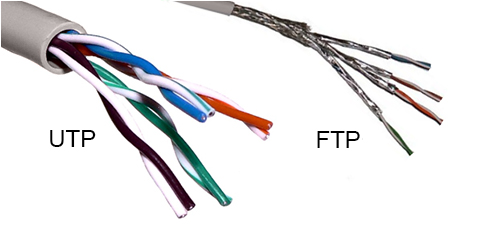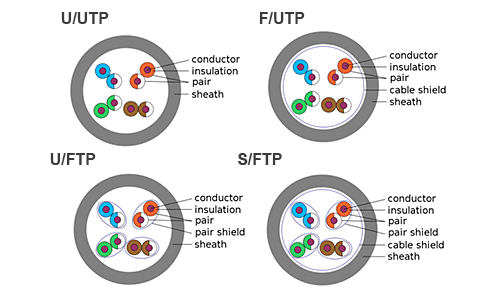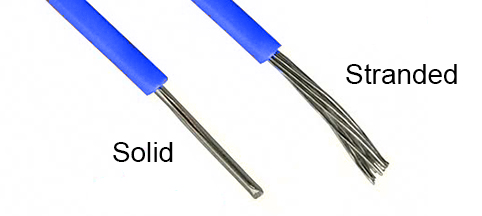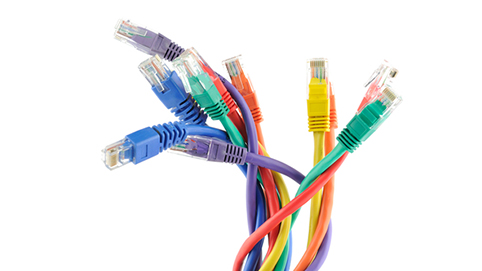Shielded (FTP) vs. Unshielded (UTP)
Because all Ethernet cables are twisted, manufacturers use shielding to further protect the cable from interference. For example, Unshielded Twisted Pair (UTP) can easily be used for cables between your computer and the wall but you will want to use Foil Shielded Cable (FTP) for areas with high interference and running cables outdoors or inside walls.

There are different ways to shield an Ethernet cable, but typically it involves putting a shield around each pair of wire in the cable. This protects the pairs from crosstalk internally. Manufacturers can further protect cables from alien crosstalk with additional cable shielding beneath the sheath. The diagram below shows the different types of Ethernet shielding and the codes used to differentiate them.

The code before the slash designates the shielding for the cable itself, while the code after the slash determines the shielding for the individual pairs: TP = twisted pair, U = unshielded, F = foil shielding, S = braided shielding
Solid vs. Stranded
Solid and stranded Ethernet cables refer to the actual copper conductor in the pairs. Solid cable uses a single piece of copper for the electrical conductor while stranded uses a series of copper cables twisted together. There are many different applications for each type of conductor, but there are two main applications for each type you should know about.

Key Differences
- Stranded cable is more flexible and should be used at your desk or anywhere you may be moving the cable around often.
- Solid cable is not as flexible but it is also more durable which makes it ideal for permanent installations as well as outdoor and in walls.
source: http: www.broadbandbuyer.co.uk

That’s what I was looking for. I am talking about all topics bundled in this blog. They all are really very useful for me as well as for my team. We are definitely going to use its highlighted information.
ReplyDeletejz-500